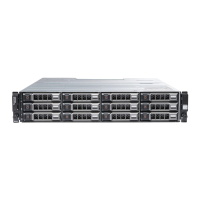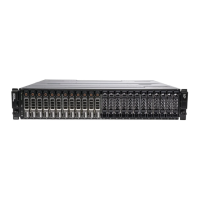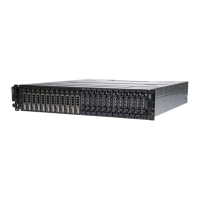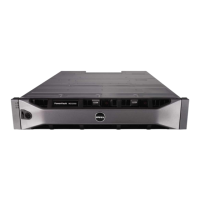56 Preparing Your Systems for Clustering
6
Select the virtual disk to be mapped in the
Virtual Disk
section. The
Virtual Disk
section lists the names and capacity of the virtual disks that
are available for mapping based on the selected host group or selected
host.
7
Click
Add
.
NOTE: The Add button is inactive until a host group or host, LUN, and virtual disk
are selected.
8
To define additional mappings, repeat step 4 through step 7.
NOTE: After a virtual disk has been mapped once, it is no longer available in the
Virtual Disk area.
9
Click
Close
. The mappings are saved. The
Topology
pane and the
Defined
Mappings
pane in the
Mappings
tab are updated to display the mappings.
Troubleshooting Tools
The Dell PowerVault MDSM establishes communication with each managed
array and determines the current array status. When a problem occurs on a
storage array, the MDSM provides several ways to troubleshoot the problem.
Event Log
You can use the Event Log Viewer to view a detailed list of events that occur
in a storage array. The event log is stored on reserved areas on the storage array
disks. It records configuration events and storage array component failures.
CAUTION: Use this option only under the guidance of your Technical Support
representative.
The event log stores approximately 8000 events before it replaces an event
with a new event. If you want to keep a record of the events, you may save
them or clear them from the event log.
The Event Log window shows the following types of event views:
• Summary view—Shows an event summary in a table form.
• Detail view—Shows details about a selected event.
To view the event log:
1
In the
Array Management
window, select
Advanced
Troubleshooting
View Event Log
. The
Event Log
is displayed. By default, the summary
view is displayed.
book.book Page 56 Monday, July 25, 2011 3:18 PM

